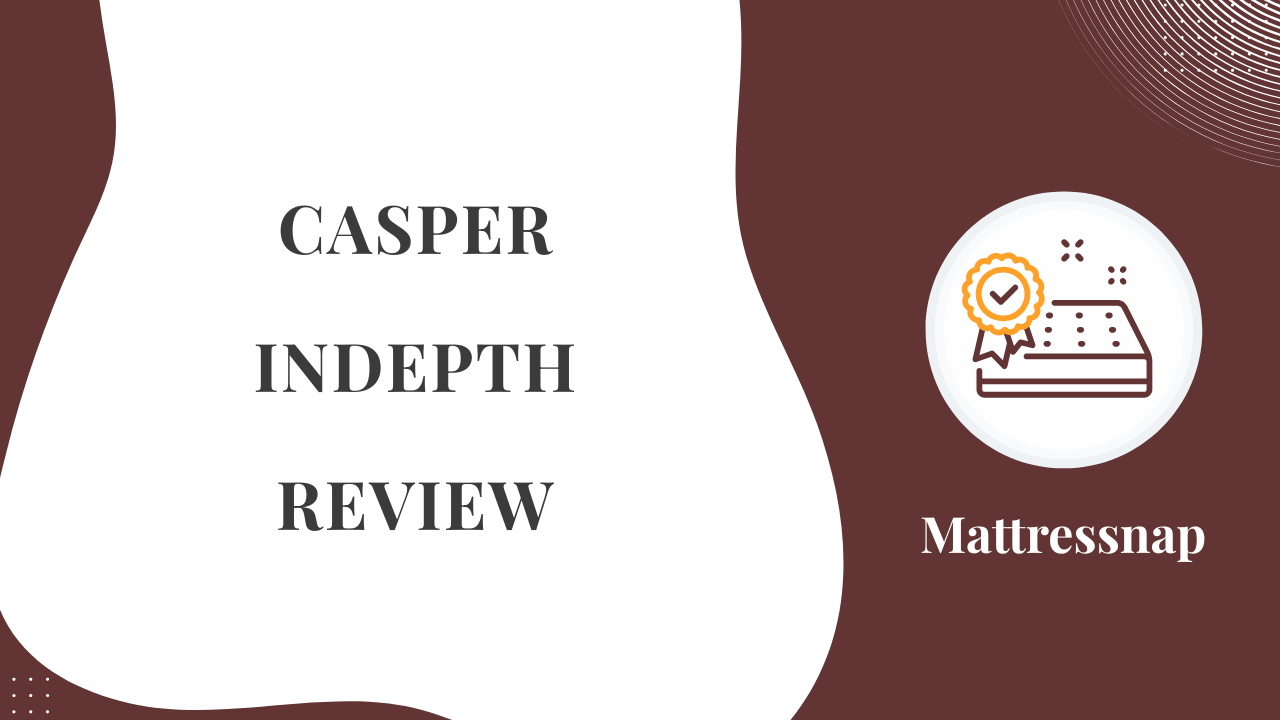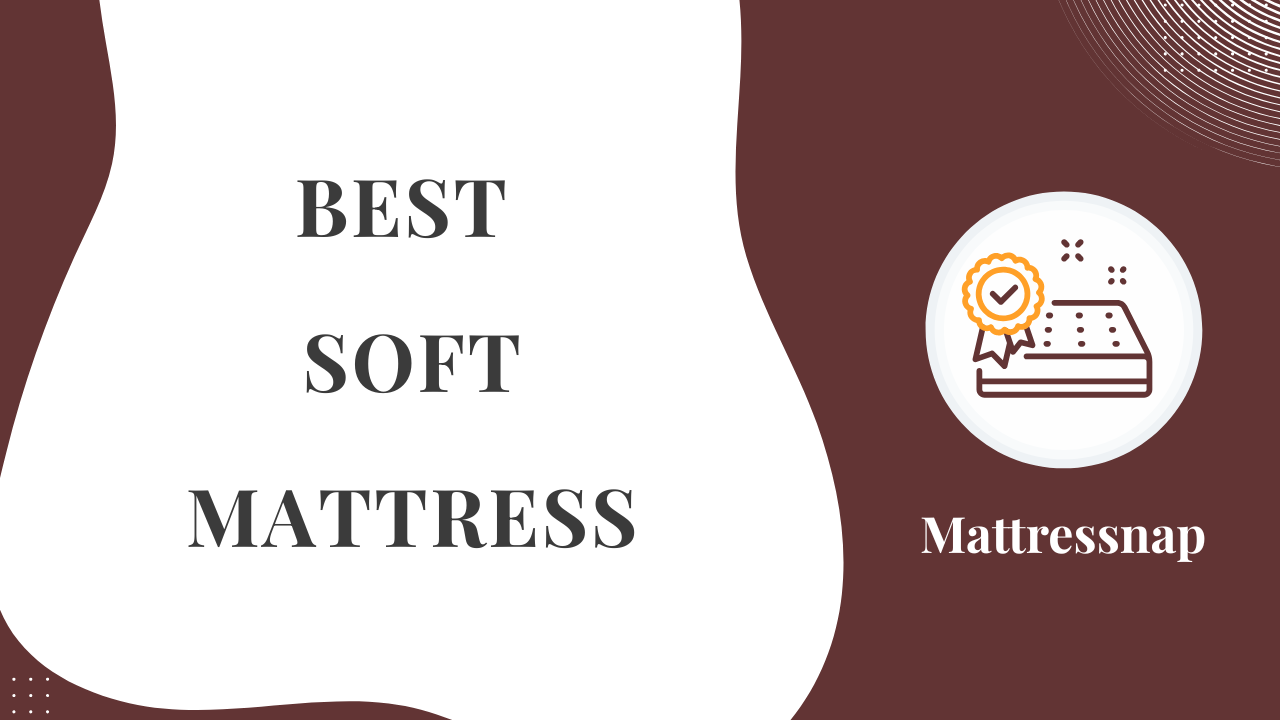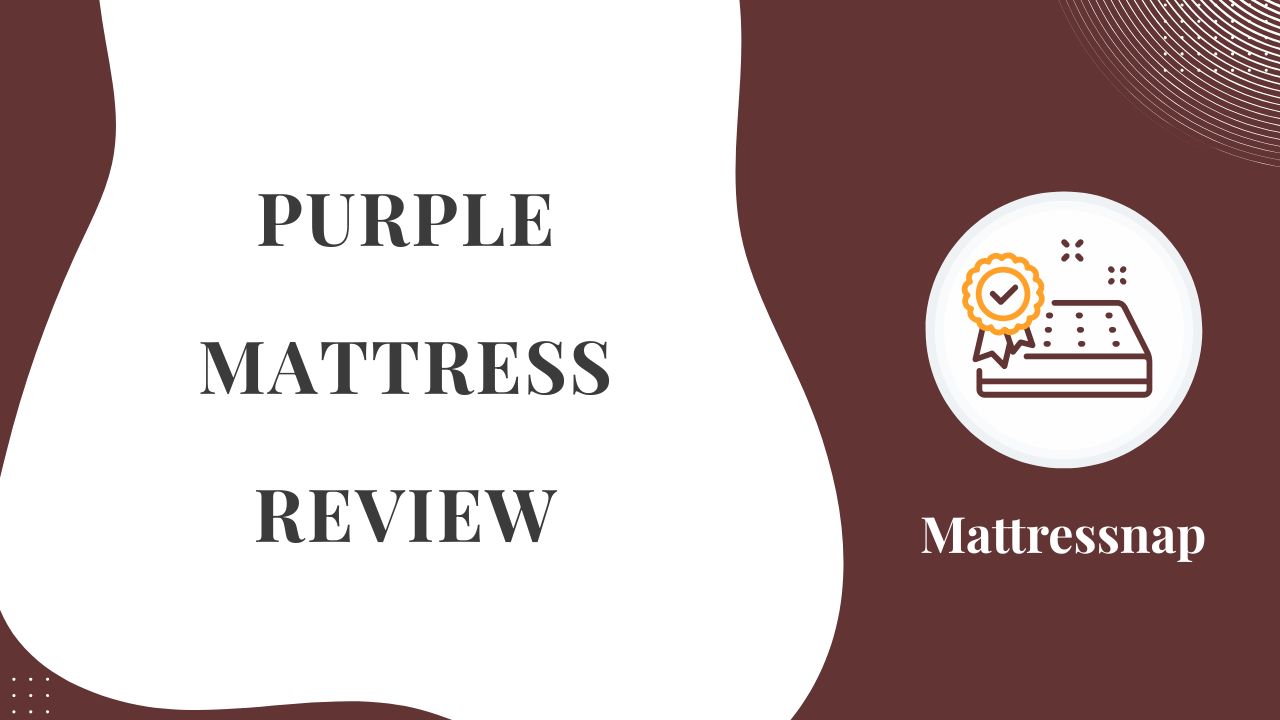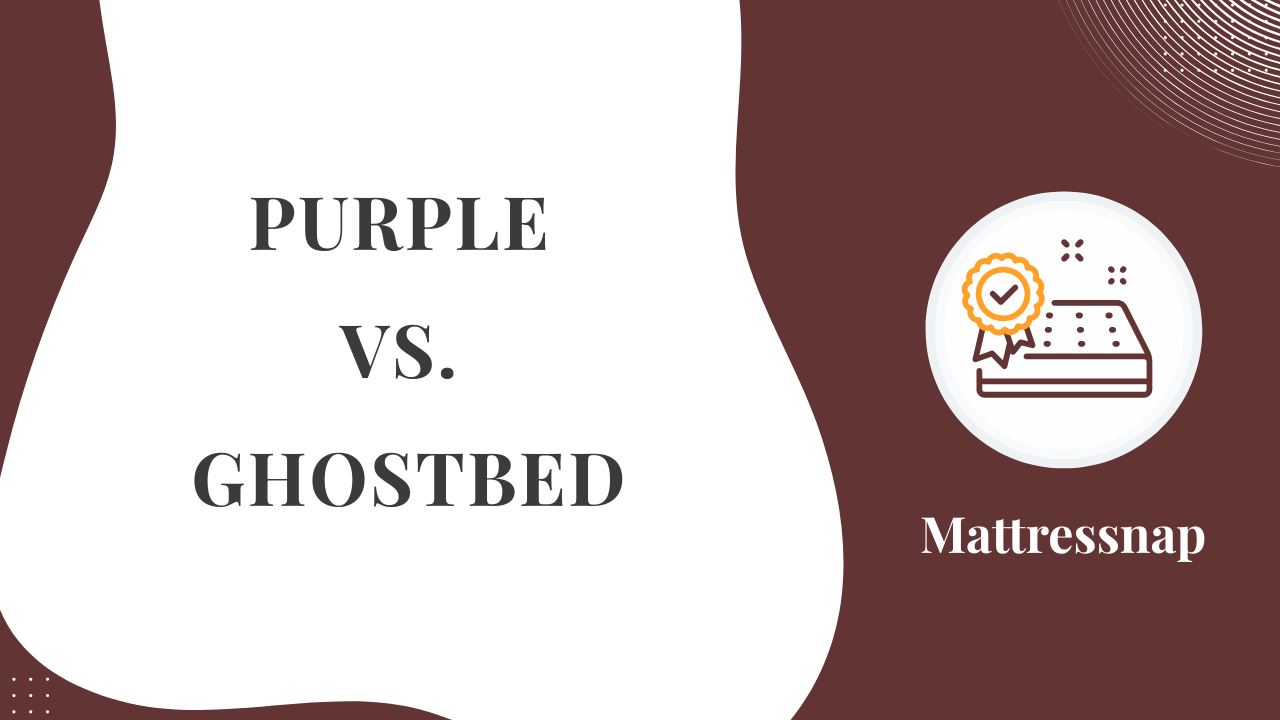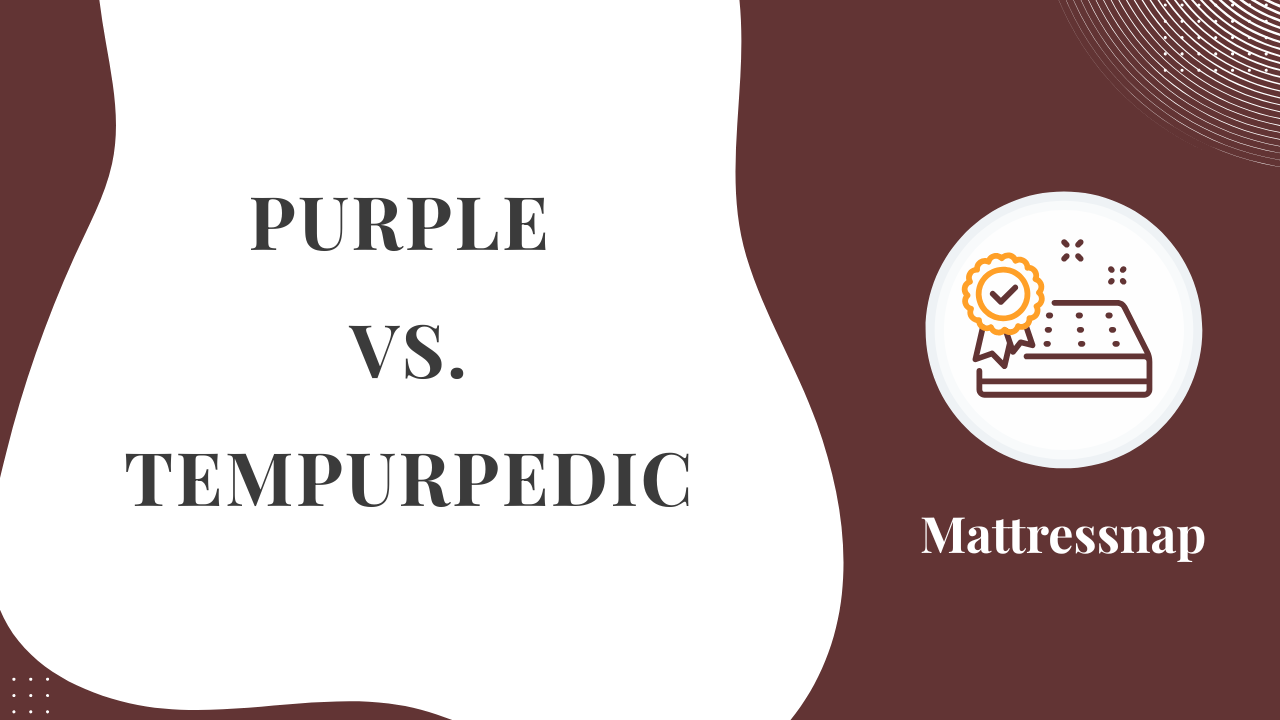Welcome to Mattressnap, where we cut through the noise to bring you honest, easy-to-read mattress reviews! If you’re on the hunt for a bed that blends comfort, support, and a wallet-friendly price tag, the Casper One has likely caught your eye. As Casper’s most affordable all-foam mattress, it’s designed to deliver the brand’s signature quality without the premium price.
But does it live up to the hype? We’ve dug into expert reviews, pored over performance data, and analyzed feedback from sources like NapLab and Sleep Foundation to give you the full scoop. So, grab a snack, and let’s see if the Casper One is your ticket to dreamland!
Best For
The Casper One is a versatile mattress that works well for a variety of sleepers, but it’s especially great for:
- Back sleepers under 230 pounds: Its medium-firm feel (around 6/10) strikes a sweet spot, supporting your lower back while keeping your spine in line.
- Couples who need motion isolation: If your partner’s a restless sleeper, the Casper One’s foam layers soak up movement, so you won’t feel every toss and turn.
- Budget shoppers: This is Casper’s most affordable mattress, making it perfect for young adults, guest rooms, or anyone looking for value without sacrificing quality.
- Combination sleepers: The responsive foam lets you switch positions easily, ideal for those who flip between back, side, and stomach sleeping.
- Fans of a “floating” feel: If you prefer lying on your mattress rather than sinking into it, the Casper One’s minimal sinkage delivers a supportive, balanced vibe.
Considerations
Before you click “buy,” here are a few things to keep in mind:
- Not great for hot sleepers: The Casper One’s cooling is okay but not amazing. If you run warm, you might notice some heat buildup, especially in hot climates. Check out the Casper Snow for better cooling tech.
- Limited pressure relief for heavier folks: With just 3 inches of comfort foam, side sleepers or those over 230 pounds may feel pressure at the hips and shoulders.
- Weak edge support: The edges sink about 3.5 inches when sitting, which could be a problem for couples who spread out or anyone with mobility issues.
- Long off-gassing period: The “new mattress” smell sticks around for up to 12 days—way longer than the average. If you’re sensitive to odors, plan to air it out.
- Not ideal for heavier stomach sleepers: If you’re over 230 pounds and sleep on your stomach, the medium-firm feel might let your hips sink too far, throwing off spinal alignment.
Our Verdict

At Mattressnap, we think the Casper One is a solid choice for budget-conscious sleepers who want a reliable all-foam mattress. Its medium-firm feel, top-notch motion isolation, and quick response make it a winner for back sleepers, couples, and combination sleepers under 230 pounds.
That said, it’s not perfect—cooling and edge support are just okay, pressure relief falls short for heavier sleepers, and the off-gassing period is a bit of a drag. If you’re looking for an affordable bed and don’t sleep hot, the Casper One is a great pick. For better cooling or support, consider the Casper Snow or Original Hybrid.
Mattressnap Score: 7.8/10 – A budget-friendly bed with solid performance and a few trade-offs.
Performance Tests

We’ve crunched the numbers from expert tests (shoutout to NapLab and Sleep Foundation) to break down how the Casper One performs in key areas like cooling, motion transfer, and edge support. Here’s the lowdown.
How is Casper One Different?
The Casper One is Casper’s entry-level all-foam mattress, taking over from older models like The Casper and Original. It ditches the zoned support layer for a simpler design with Align Memory Foam for gentle contouring. At 10 inches thick (Casper says 11), it’s slimmer than the average 12-inch mattress, which keeps costs down but limits pressure relief. Compared to the Casper Snow or Original Hybrid, it skips advanced cooling tech and coils, making it less supportive for heavier sleepers but easier on the wallet.
Cooling Test
Foam mattresses often trap heat, so cooling is key. The Casper One uses open-cell foam and a breathable cover to promote airflow, but it’s not a standout. Testers noted slight to moderate heat retention, especially around the back and hips, with a max surface temp of about 90°F (1°F warmer than average). After 15 minutes of lying down, it cooled by 7-8°F over 5 minutes—decent but not exceptional. Hot sleepers might prefer a hybrid like the Casper Snow, which uses coils and phase-change materials for better heat dissipation.
Score: 7/10 – Fine for most, but warm sleepers may want more cooling power.
Heat Dissipation Over Time
The Casper One sheds heat steadily but not super fast. NapLab’s tests showed a 5-6°F drop in the first minute after a 15-minute lie-down and 7-8°F after 5 minutes. That’s better than many all-foam beds but trails hybrids with coils or cooling tech. Without phase-change materials or a thicker comfort layer, it struggles to wick heat away quickly.
Sinkage Test
Sinkage affects how much you sink into the mattress, shaping its feel. The Casper One has minimal sinkage, with a pressure point depth of 1.77 inches—0.38 inches less than the average of 2.15 inches. This gives a “floating” feel where you rest on the mattress rather than in it. Hips sink slightly more, but the contouring is subtle, leaning toward a balanced foam vibe rather than a deep memory foam hug. Great for back sleepers, less so for side sleepers who want more cradling.
Score: 8/10 – Perfect for those who like a firmer, less enveloping feel.
Motion Transfer Test
Sharing a bed? Motion transfer is a big deal. The Casper One nails it, with a low acceleration range of 6-8 m/s²—20-27% less than the average of 8.73 m/s². In tests, a 16-pound bowling ball dropped on the mattress barely budged a standing pin, and testers felt minimal disturbance from a partner’s movements. The memory foam layer absorbs motion like a champ, making this a top choice for light sleepers with fidgety bedmates.
Score: 9/10 – A dream for couples who want undisturbed sleep.
Response Test
Response time measures how fast the foam springs back after pressure. The Casper One is lightning-quick, recovering in 0.2-0.3 seconds—faster than the average of 0.4 seconds. This snappy response makes changing positions a breeze, a huge plus for combination sleepers. The open-cell poly foam top layer adds a touch of bounce, avoiding that “stuck” feeling of some memory foam beds.
Score: 9/10 – Super responsive for easy movement.
Bounce Test
Bounce impacts ease of movement and, ahem, other bedroom fun. The Casper One has low bounce at about 8 inches—10% less than the average of 9.53 inches. This keeps motion transfer in check but makes the mattress feel less lively. Most sleepers won’t mind, but if you want a springier surface, try the Casper Original Hybrid (8.21 inches of bounce).
Score: 7/10 – Low bounce favors motion isolation over liveliness.
Edge Support Test
Edge support matters for couples who use the whole mattress or anyone who sits on the edge. The Casper One does well when sitting, with 3.5 inches of sinkage—0.54 inches less than the average of 4.04 inches. But lying near the edge feels less secure, as the foam compresses more than hybrids with reinforced edges. This could be an issue for edge sleepers or those with mobility needs.
Score: 7.5/10 – Good for sitting, so-so for lying near the edge.
Sex Test
NapLab’s sex score looks at bounce, edge support, noise, pressure relief, and cooling. The Casper One scores 7.5/10, below the average of 8.7. Low bounce (8 inches) and weaker lying edge support make intimate moments less dynamic, but it’s quiet, and cooling and pressure relief are decent. For a better experience, the Casper Original Hybrid (8.7/10) or Nova Hybrid (9.0/10) offer more bounce and stronger edges.
How Do We Determine Sex Score?
We weigh bounce (65%), edge support (20%), noise (5%), pressure relief (5%), and cooling (5%). High bounce and sturdy edges ease movement, while quiet foam and comfort enhance the experience.
Pressure Relief Test
Pressure relief is crucial for side sleepers and those with aches. The Casper One’s 3-inch comfort layer (1 inch below average) underperforms, scoring 6.5/10. Testers felt moderate pressure buildup, especially in the lower back and shoulders, due to the thin foam and firm base. It’s fine for back sleepers under 230 pounds but may disappoint side sleepers or heavier folks. For better relief, the Casper Wave Hybrid (5 inches of comfort foam) scores a perfect 10/10.
Score: 6.5/10 – Works for lighter back sleepers, not great for others.
Off-Gassing Test
That “new mattress” smell? The Casper One’s is strong and lingers for about 12 days—over twice the average of 5.89 days. Sensitive sleepers or those eager to hop into bed might find this annoying. Air it out in a well-ventilated room for best results.
Score: 6/10 – Long off-gassing is a bummer.
Company
Casper’s been a bed-in-a-box trailblazer since 2014. They offer a 100-night trial (with a 30-night break-in period), a 10-year warranty, and free shipping in the contiguous U.S. You can buy online, at Casper showrooms, or through retailers like Target. Their customer service is top-notch, but Mattressnap notes the warranty is shorter than competitors like Saatva, who offer lifetime coverage.
Score: 8/10 – Reliable policies, but a longer warranty would be nice.
How Do We Determine Company Score?
We factor in trial period, warranty length, shipping ease, and customer service. Casper’s 100-night trial and 10-year warranty are solid, but lifetime warranties from others raise the bar.
How Firm is Casper One?
The Casper One feels medium-firm, rated at 6/10 (1 is softest, 10 is firmest), a touch firmer than the popular 5.5-6/10 range. It supports back and light stomach sleepers well but might feel too firm for lightweight side sleepers needing more cushion. Without zoned support, the firmness is consistent across the bed.
Support & Sleeping Positions

Here’s how the Casper One stacks up for different sleepers:
- Back Sleepers: Perfect for those under 230 pounds. The medium-firm foam supports the lower back and aligns the spine. Heavier back sleepers might notice some sinkage.
- Side Sleepers: Good for those under 230 pounds. The foam cushions hips and shoulders, but heavier side sleepers may feel pressure points due to the firm base.
- Stomach Sleepers: Fine for lightweight sleepers (under 130 pounds). Heavier stomach sleepers risk hip sinkage, which can misalign the spine.
- Combination Sleepers: The quick response time makes switching positions easy, ideal for restless sleepers.
Best for: Back and combination sleepers under 230 pounds.
Less ideal for: Heavier sleepers or strict side/stomach sleepers.
Design
The Casper One is a 10-inch all-foam mattress (Casper lists it as 11 inches) with a straightforward three-layer design built for affordability. It skips extras like zoned support or cooling bands found in pricier models like the Snow or Dream Max. The medium-firm feel and minimal sinkage create a supportive, easy-to-move-on surface. Available in all standard sizes (Twin to Split King), it’s sold online, in Casper showrooms, and at partners like Target.
Materials
Let’s take a peek inside the Casper One:
The Cover
The cover is a soft, stretchy knit blend of polyester and spandex. It’s breathable but lacks the cooling yarn or phase-change materials of Casper’s Snow models. It promotes some airflow but isn’t a cooling superstar.
The Comfort Layer
The comfort layer has two foams:
- Top Layer: 1 inch of open-cell poly foam (similar to AirScape) for responsiveness and slight cooling. Open cells help with heat dissipation, but it’s not as effective as hybrids.
- Second Layer: 2 inches of Align Memory Foam for gentle contouring and pressure relief. It’s less dense than premium foams (at least 2.5 pounds per cubic foot), which may affect durability for heavier sleepers.
Total comfort layer thickness is 3 inches, below the average of 4.1 inches, limiting pressure relief.
The Support Layer
A 7-inch high-density poly foam base provides stability and durability. It’s firm but lacks the zoned coils or transitional layers of pricier Casper models, which can make it feel too stiff for some. The foam density (at least 1.8 pounds per cubic foot) is decent but may sag over time for sleepers over 230 pounds.
Final Thoughts
At Mattressnap, we’re impressed with the Casper One’s value. It shines in motion isolation, responsiveness, and affordability, making it a great fit for back sleepers, couples, and combination sleepers under 230 pounds who want a medium-firm feel. But cooling, edge support, and pressure relief aren’t its strong suits, and the long off-gassing period might test your patience. If you sleep hot or need extra support for heavier weights, consider the Casper Snow or Original Hybrid.
For its price, the Casper One delivers solid performance for the right sleeper. If it matches your needs, it could be the cozy, budget-friendly bed you’ve been searching for!



